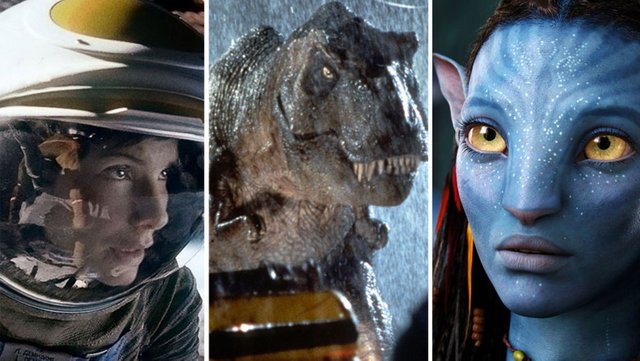
As some of you know one of my main areas of interest is in 3D modelling. My curiosity in CGI (Computer Generated Imagery) was born some 35 years ago when I witnessed computer animation used in the Disney classic Tron – released in 1982. It was the first time extensive use of CGI was used in a movie and some 15 minutes of footage was fully computer generated, including the infamous Light Cycle scene.
It was not however the first film to feature computer generated graphics. That honour falls to the 1976 movie Future World, the sequel to West World, in which a short sequence of rudimentary hand and face animation was featured, as seen in the following clip from YouTube.
Although impressive at the time this still wasn't what would today be classed as 3D animation: the clip used in Future World was the work of graduate students Ed Catmull and Fred Parke at the University of Utah and was originally completed in 1972. Ed Catmull's hand was used, onto which polygon points were marked. This was then recorded by camera for the computer to turn into a wire frame image. Ed went on to found Pixar and is the current president of Pixar and Walt Disney Animation Studios. During his illustrious career Ed Catmull has had many significant developments in computer graphics attributed to him, not least the now widely used Catmull-Clark subdivision algorithm used by all major 3D packages today to smooth out surfaces.
The very next year my all time favourite movie Star Wars was released in which an animated wireframe rendering of the Death Star trench run sequence was used during the climax.
By today's standards these now look primitive but back in the 1970s computing power was a fraction of what it is today. These early super computers only had around 800MB of storage, easily surpassed today with the mobile phone in your pocket with computers costing many hundreds of thousands of dollars.
Although still basic, a wireframe model was to be used in 1979 in another Disney film, The Black Hole, seen during the opening credits depicting a black hole.
The same year the Sci-fi horror classic Alien shocked audiences worldwide. As the lander is piloted towards the planet LV-426, ready for John Hurt's encounter with a facehugger, you can see a wireframe rendering on the navigation monitors as it approaches orbit.
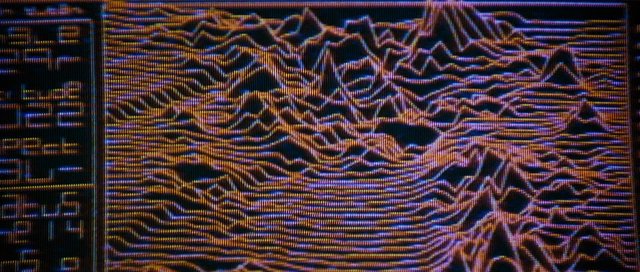
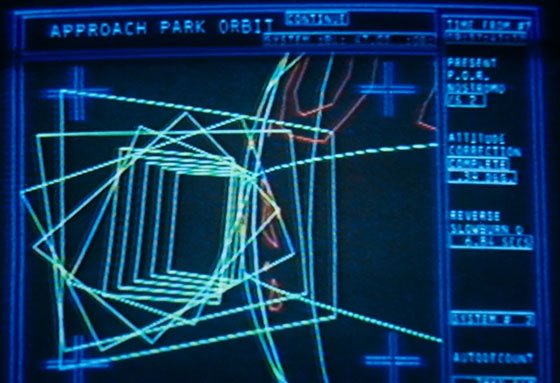
The next major feature of CGI can be seen in Star Trek II: The Wrath of Khan. ILM (Industrial Light and Magic) created the 'Genesis Effect' – bringing the first use of a fractal generated landscape to the big screen. See a behind the scenes clip below.
In 1984 young movie goers were treated to The Last Starfighter which amazed audiences with CGI spaceships, environments and battle scenes. It has the distinction of being the first film to feature CGI representations of 'real life' objects, as opposed to digital graphics as with Tron. Interestingly the movie heavily features arcade culture from the 1980s – CGI in both movies and computer games have kept apace of each other and spurred the other to create more and more lifelike graphics.
The same year the sequel to Stanley Kubrick's 2001, 2010: The Year We Make Contact used CGI for the atmosphere of Jupiter.
Lucasfilm' Young Sherlock Holmes, released in 1985, is attributed with having the first photorealistic CGI character, the Stained Glass Knight. It may not impress nowadays but 32 years ago this was cutting edge!
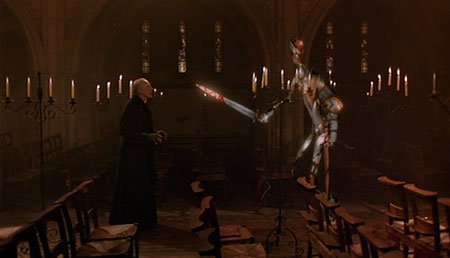
Disney, now seemingly all in with CGI, released The Flight of The Navigator in 1986. The movie tells the story of a young boy who is abducted by a computer generated alien spacecraft. This saw the first use of 'reflection mapping' to create the surface of the craft.
Also in 1986, a guilty pleasure of mine, Labyrinth, was released featuring the acting and singing of rock supergod David Bowie, surrounded by an army of Jim Henson's puppets. The CGI owl in the opening and closing credits can be seen in the following clip, hailed as the first 'realistic' depiction of an animal.
Star Trek IV: The Voyage Home followed soon after. The movie had 2 movie firsts: the first to use a 3D scanner to capture facial data of the actors and the first to feature 3D morphing, as you can see towards the end of the following clip.
Although not a movie in it's own right, Pixar's Luxo Jr. deserves an honourable mention here. Firstly as it is the first step of industry pioneers Pixar, but also because it was the first to use shadows in 3D – made with the photorealistic Renderman which is still in use today – although naturally it has advanced greatly over the years. Luxo Jr. earned Pixar a nomination for an Academy Award.
The Abyss came to the silver screen in 1989 and made wide use of a digital water effect for the aquatic alien lifeforms
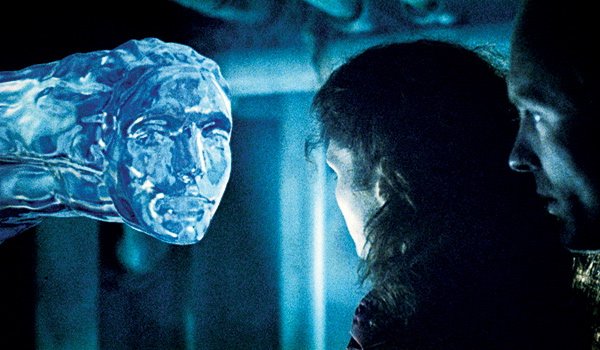
During the 1990s the CGI industry had advanced quite dramatically, starting with Terminator 2: Judgement Day, released in 1991. In the movie the T-2000 terminator could shape-shift and was often depicted as liquid metal. The movie is attributed with having the first realistic CGI human movements. 3D morphing techniques were widely used and it is the first movie to have had it's special effects created on a personal computer.
This same year we saw dinosaurs brought back to life like never before in Steven Spielberg's Jurassic Park, scaring our children – and some adults - with the first truly photorealistic creatures. A 'Dinosaur Input Device' was created to animate the dinosaurs in a way much like with stop motion techniques: the rigs fed input into the computers in order for the animators to control the 3D animals.
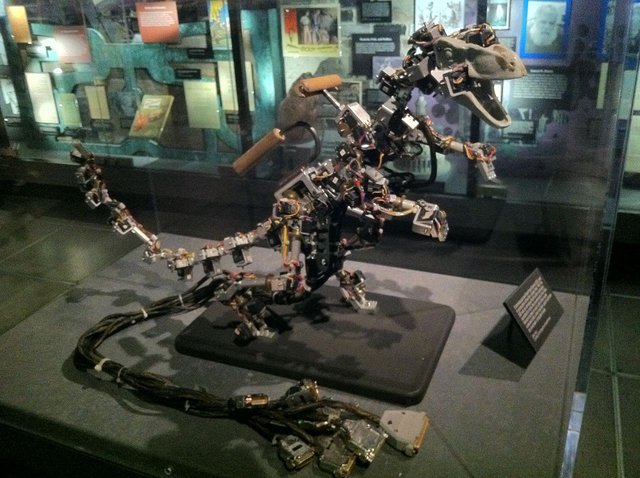
I remember going to the cinema in 1992 to watch The Lawnmower Man and I was in awe of the sequences where Jobe and Dr Angelo were in virtual reality. Naturally all these sequences were CGI and in no way photorealistic, being a depiction of a digital world
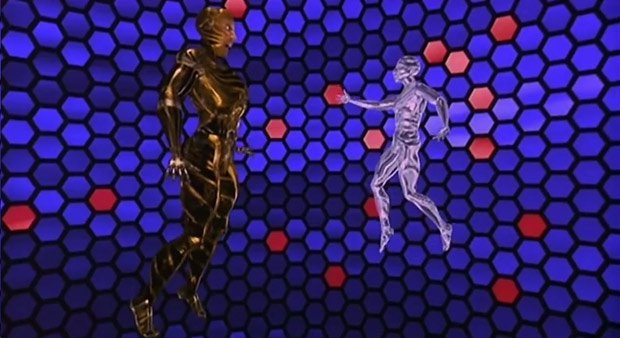
The live action version of The Flintstones came in 1994 bringing with it the first use of CGI generated fur for the family's pet, a sabre toothed 'Kitty'. I couldn't find an image to use :-(
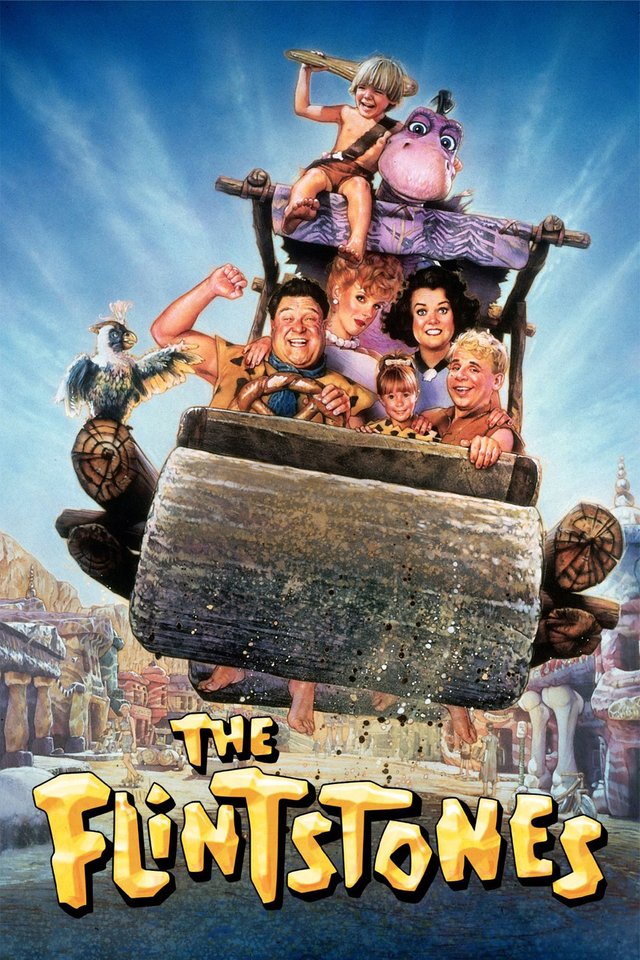
In 1995 Casper had the first CGI lead character in a live action movie
Shortly after, we saw the arrival of the pioneer in CG animated films, Toy Story. Pixar, which until then had created short animations to promote their computer – the Pixar Image Computer - was approached by Disney to make a feature film after the success of their short film Tin Toy. Bonus geek fact: did you know that Steve Jobs of Apple fame acquired Pixar from George Lucas for $5 million in 1986? It kept him busy when he was fired by Apple a year earlier. Toy story received critical acclaim and was the highest grossing movie on it's opening weekend.
1997 was a dark year for original Star Wars fans as George Lucas massacred his original trilogy with a digital do-over, introducing CGI characters, ships and other elements. Sorry George, you were wrong.
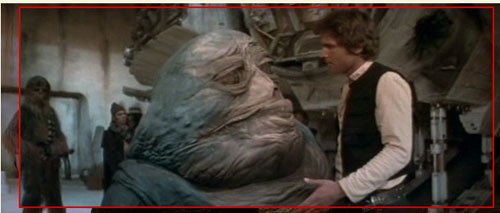
What were you thinking George?!?
Later that same year the world wide tissue market saw a sharp rise in sales with the release of James Cameron's Titanic. Many of the sequences were CGI including many shots of the doomed ship and saw many advances including the rendering of flowing water. Bonus information for geeks: did you know that Titanic was the first feature film to have all of it's major sequences created on a Linux system?
Cult cyberpunk classic The Matrix was released in 1999 and we were treated to a phantasmagorical collection of CGI effects, everything from the bullet time sequence to the rendering of the Nebuchadnezzar, Morpheus' hover ship. The 2 sequels, Reloaded and Revolutions were shot back to back and released in 2003.
Star Wars: Episode 1- The Phantom Menace reinforced Lucas' new found love for CGI which featured heavily in the movie - backgrounds, crowd shots, vehicles, creatures and environmental effects were used in thousands of shots, the most extensive use for CGI in a movie to date. The movie also gave us Jar-Jar Binks...
In 2001 Final Fantasy: The Spirits Within created a breathtaking world for cinema goers to visit. The photorealistic characters were the first to utilize motion capture, the movements of actors was captured and used for the animations. It's amazing that computer games are now very close to being the same quality!
This year saw the first of Peter Jackson's Lord of the Rings Trilogy – The Fellowship of the Ring. As well as using computers for digital compositing of scenes it is lauded for being the first film to use AI (Artificial Intelligence) for some of it's digital actors.
The sequel, The Two Towers arrived the following year in 2002 and is the first movie in which a virtual actor has won an award in a new category Best Digital Acting Performance – won by Andy Serkis for playing Gollum.
The first Ice Age introduced us to a memorable cast of prehistoric characters this same year, including the wonderful Scrat.

Ice Age was the first full length film rendered with a ray tracer. Ray tracing creates an image by literally tracing the path of light as it reacts with surfaces and reflects or refracts, creating a great deal of realism. It's downside is that is computationally expensive.
Not content with lending his voice to Woody in Toy Story, Tom hanks plays six different roles in the movie Polar Express, a firm family Christmas favourite in the Gmuxx household. Released in 2004, the characters were all motion captured and we saw beautiful snow effects.
Michael Bay's first Transformers movie arrived at cinemas in 2007. Incredible attention to detail was used to bring the giant robots to life. Optimus Prime alone comprised of over 10,000 parts. Each frame of the movie took Industrial Light and Magic on average 35 hours to render! In the third instalment, Dark Side of The Moon, the Driller had a staggering 70,000 parts.
In 2009 James Cameron released Avatar. He had originally planned to make the film in the 1990s but delayed it to wait for technology to catch up to his vision for the film. Making wide use of motion capture, both for movement and facial expressions, the effects were a masterpiece of digital cinematography. Weta Digital, who also worked on the Lord of the Rings trilogy, were tasked with the digital work for Avatar and they succeeded in creating the fully computer generated 3D world of Pandora, full of CGI creatures.
Another great family favourite is Up, released in 2009 by Disney Pixar
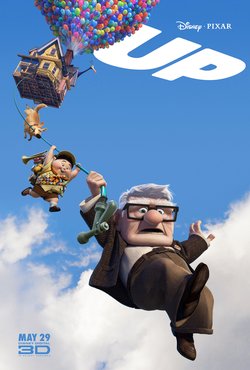
Up was the first CG animated film to be nominated for an Academy Award for best picture. Bonus fact for the geeks amongst us: did you know it was calculated that it would take 23 million balloons to make Carl's house fly? In the movie however there are 21,000 in the lift off shot and just 11,000 when the house is in the air. No, I didn't count them.
Toy Story 3 arrived in 2010 and was again received with critical acclaim, earning it the title of the first animated film to generate a whopping $1 billion in sales!
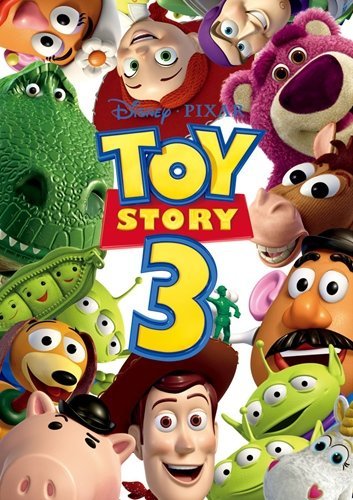
Superhero movies have been a staple diet for the cinema going public since the start of this century. Films like X-Men, Spiderman, Superman, Batman, The Hulk, The Avengers, Deadpool and Guardians of the Galaxy, each one brings advances in realism when it comes to CGI, each surpassing it's predecessor.
What is the future of CGI in movies? I think you can agree we have come a long way since the early attempts in the 1970s. CGI is now indistinguishable from reality, we only have to look at the 2013 release of Gravity which accurately represents life in near space.
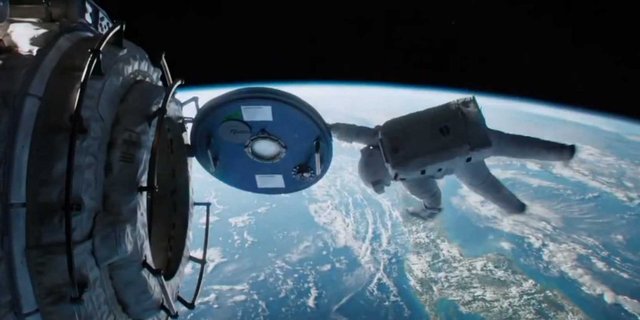
In 1992 we saw The Lawnmower Man's vision for virtual reality. This has now finally come to fruition with systems such as the Occulus Rift, HTC Vive and Playstation VR.
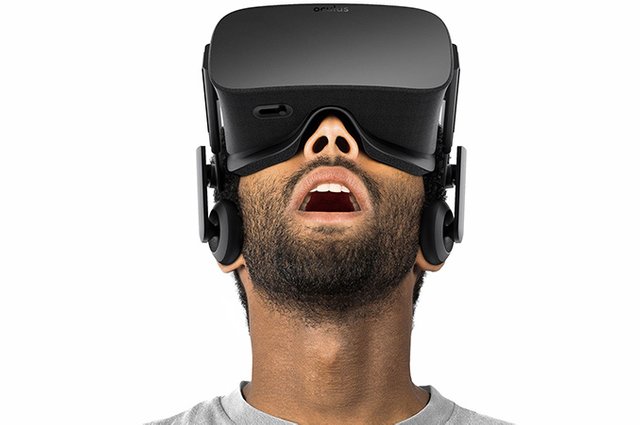
In the not too distant future we are going to be able to visit a movie world, immersed in full 3D stereoscopic visuals with spatial audio. How far will this go? Will smell also be simulated for example? Touch? Are we going to be lost in virtual movie sets, a Matrix of our own making?
1 2 3 4 5 6 7 8 9 10 11 12 13 14

Amazing post! You did a lot of work here ★ For Film-Fans a Must!
Downvoting a post can decrease pending rewards and make it less visible. Common reasons:
Submit
Thank you for your very kind comments
Downvoting a post can decrease pending rewards and make it less visible. Common reasons:
Submit
Hey @gmuxx
This story made it to the #steempearls of @blackwidow7 . Check it out https://steemit.com/steempearls/@blackwidow7/steempearls-9
Downvoting a post can decrease pending rewards and make it less visible. Common reasons:
Submit
Thank you! So happy somebody found it interesting!
Downvoting a post can decrease pending rewards and make it less visible. Common reasons:
Submit
Holy balls sir! That's one hell of a post.
And we must be on the same wavelength somewhere because every time I read about one movie I instantly thought of another ("ooh I wonder if he'll mention") only to find it comes up right after!
I have to say Final Fantasy: Spirits Within was the first film where I could not quite mistake it for real life but easily forget I was watching CGI. And the Last Starfighter is one of my all time favourites, what a film!
I can highly recommend Appleseed Alpha as another film with impressive CGI.
Downvoting a post can decrease pending rewards and make it less visible. Common reasons:
Submit
Thank you very much. I must admit I saved over this post. Spent a few hours researching it and close to 3 typing it up.
Spirits Within want quite realistic in a still but what sold it was the motion capture.
I will check out Appleseed Alpha, never heard of it.
Downvoting a post can decrease pending rewards and make it less visible. Common reasons:
Submit
Nice post @gmuxx !
I love graphic design. And stopped studying it as soon a sit left the hand and went to computers. I always preferred a pencil in my hand <3
Up voted
Downvoting a post can decrease pending rewards and make it less visible. Common reasons:
Submit
Thank you!
I still use my hand with a graphics tablet 😉
Downvoting a post can decrease pending rewards and make it less visible. Common reasons:
Submit
haha! When I stopped I was only in 7th year at school :') Didn't even know what a tablet was then! :')
Downvoting a post can decrease pending rewards and make it less visible. Common reasons:
Submit
Ah, I see. You are forgiven 😜
Downvoting a post can decrease pending rewards and make it less visible. Common reasons:
Submit
You run interesting blog
Downvoting a post can decrease pending rewards and make it less visible. Common reasons:
Submit
Thank you for your kind words, I appreciate it
Downvoting a post can decrease pending rewards and make it less visible. Common reasons:
Submit
Indeed - @gmuxx posts are delighting all us
Downvoting a post can decrease pending rewards and make it less visible. Common reasons:
Submit
Thank you @digitalplayer I really appreciate the comment
Downvoting a post can decrease pending rewards and make it less visible. Common reasons:
Submit
What an amazing post! Very interesting. I saw an interview with Steve Jobs about Pixar.
Downvoting a post can decrease pending rewards and make it less visible. Common reasons:
Submit
Thank you very much for your comment, it means a lot.
Interesting clip, thanks for sharing. Watching now 👍
Downvoting a post can decrease pending rewards and make it less visible. Common reasons:
Submit
Great post, There are a lot of artist in my family and some of my siblings families. I had the pleasure of meeting an in-law of one of my siblings that does CGI and has worked on some of the movies you posted in your article and many others. It is amazing where the technology is heading and at a rapid pace.
Downvoting a post can decrease pending rewards and make it less visible. Common reasons:
Submit
Thank you for your kind comment. I bet you have had some interesting conversations with the in-law of your sibling.
I genuinely wonder how far they can take it
Downvoting a post can decrease pending rewards and make it less visible. Common reasons:
Submit
I have not got to have to many conversations with him as I live in Ohio and he lives in LA . I mostly mention I am going to a movie and hear that he worked on it. So I always look for his name or the name of the company he works for at the trailer.
Downvoting a post can decrease pending rewards and make it less visible. Common reasons:
Submit
Have you watched rick and mortys? theres a part where they play an arcade game.. here
Downvoting a post can decrease pending rewards and make it less visible. Common reasons:
Submit
Lol, never watched Rick and Morty...I shall have to binge watch, thanks
Downvoting a post can decrease pending rewards and make it less visible. Common reasons:
Submit
Talk about an indepth post ;) Nice topic to cover :)
CGI has come a long way. Augmented reality and reality are fast becoming interchangeable as technology tries to enhance and mimic the holographic Universe.
Create a great day,
@kozan
Downvoting a post can decrease pending rewards and make it less visible. Common reasons:
Submit
Thank you for your kind words @kozan
Downvoting a post can decrease pending rewards and make it less visible. Common reasons:
Submit
I am very much enjoying your posts. I spent several years in Second Life. It is indescribable what it's like to walk through the environments created there. It is even more difficult to describe what it's like to create art that people walk through every day. I left around the time mesh was coming in. The platform itself had so many issues. Without a platform, I had no motivation to keep learning the 3d craft. Well that and I just needed a big rest from the whole experience. But between your posts and, the fact that while I'm sitting at the computer to write every day, right across the desk from me, my 3d mouse is taunting me, I'm feeling rather intrigued. Besides, my 3d mouse is saying it's tired of being just a prop for my webcam ;-)
Downvoting a post can decrease pending rewards and make it less visible. Common reasons:
Submit
Thank you for your comments.
I never tried second life but was fascinated by the concept.
Break out your 3D mouse, working in 3D is not as challenging as I once was.
Downvoting a post can decrease pending rewards and make it less visible. Common reasons:
Submit
As 3d Fan you need to have a look on the new projects for virtual reality High Fidelity and Sansar . @marillaanne and @gmuxx
Downvoting a post can decrease pending rewards and make it less visible. Common reasons:
Submit
Wow. This is...wow. I honestly wasn't expecting the incredibly detailed post underneath the modest thumbnail I clicked on. I learned a lot just now. Thank you much @gmuxx!
Downvoting a post can decrease pending rewards and make it less visible. Common reasons:
Submit
Thank you! I put some time into this one, glad you enjoyed it. I hope you learned something from it.
Very grateful for the resteem!
Downvoting a post can decrease pending rewards and make it less visible. Common reasons:
Submit
Amazing how CGI has progress over the years @gmuxx! I like how you included Flight of the Navigator...one of my favorites when I was young
Downvoting a post can decrease pending rewards and make it less visible. Common reasons:
Submit
Thanks, same here. Also The Last Star fighter...I loved that
Downvoting a post can decrease pending rewards and make it less visible. Common reasons:
Submit
Absolutely....classic!...Following!
Downvoting a post can decrease pending rewards and make it less visible. Common reasons:
Submit
Thank you!
Downvoting a post can decrease pending rewards and make it less visible. Common reasons:
Submit
I have some friends that worked on the cgi for transformers 3.... That shit blew my mind
Downvoting a post can decrease pending rewards and make it less visible. Common reasons:
Submit
Wow, really? The effects were great
Downvoting a post can decrease pending rewards and make it less visible. Common reasons:
Submit
They kind of had to be...lol
Downvoting a post can decrease pending rewards and make it less visible. Common reasons:
Submit
Great post @gmuxx, I remember watching Tron and thinking that is just amazing. I tend to sit and watch all of the end credits of movies, and I can't remember which movie it was, but I just remember thinking "Holy cow, that is a heck of a lot of people doing the special effects
Really good post, thanks for posting it.
Downvoting a post can decrease pending rewards and make it less visible. Common reasons:
Submit
Thank you for saying so.
Tron blew my mind when I was young. Been hooked to CGI ever since.
Downvoting a post can decrease pending rewards and make it less visible. Common reasons:
Submit
CGI greatly changed how movies are made. My daughter is going to studying visual effects, she was showing me some clips of the making process of some movies, it was so interesting to see and was surprised that there are a lot more effects in a movie than I realized. For example many of the window in the building had blue screen so the can add other backgrounds through the windows.
Downvoting a post can decrease pending rewards and make it less visible. Common reasons:
Submit
Things sure have changed. I wish your daughter luck with her studies, it's a great field to get into
Downvoting a post can decrease pending rewards and make it less visible. Common reasons:
Submit